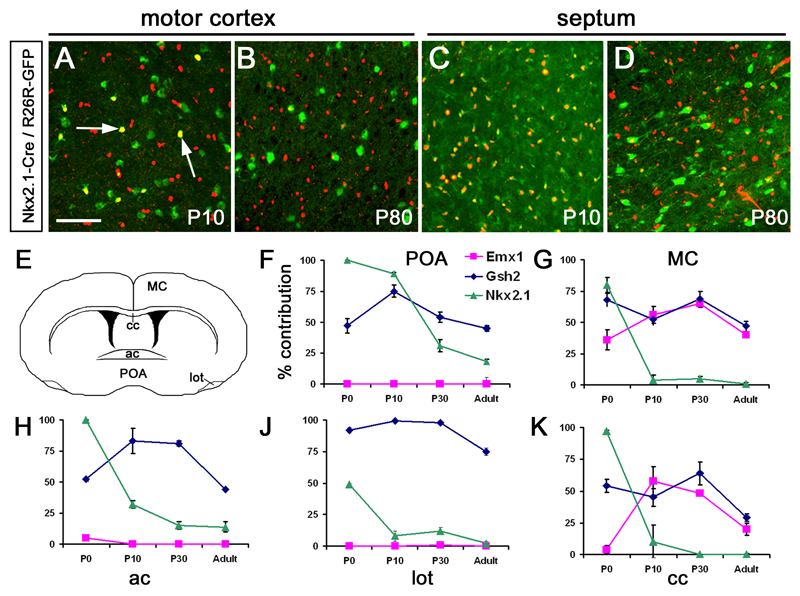Figure 2.
The embryonic Nkx2.1-derived OL lineage is rapidly eliminated during postnatal life. (a, b) In Nkx2.1-Cre/ Rosa26R-GFP mice GFP+ (green), Sox10+ (red) double-positive OLPs are already a minority in the P10 cortex (arrows in a), and their contribution drops to zero by P80. (c, d) At P10 practically all OLPs in ventral regions such as the septum are derived from Nkx2.1-expressing (MGE/AEP-derived) precursors (GFP, Sox10 double-positive; yellow nuclei in c) but even here they are replaced by other populations (GFP-negative) by P80. (e-j) The proportional contributions of the three different populations of Sox10+ OL lineage cells are presented as percentage of the total number of Sox10+ cells in each region (average± standard deviation). OLs/OLPs derived from Nkx2.1-expressing precursors are largely eliminated between birth and adulthood from most regions examined. OLs/OLPs generated from cortical precursors (Emx1-derived) remain within the cortex at all stages. Gsh2-expressing precursors give rise to OLs/OLPs that spread throughout the telencephalon. POA, preoptic area; MC, motor cortex; AC, anterior commissure; LOT, lateral olfactory tract; CC, corpus callosum. Scale bar: 100 μm.

